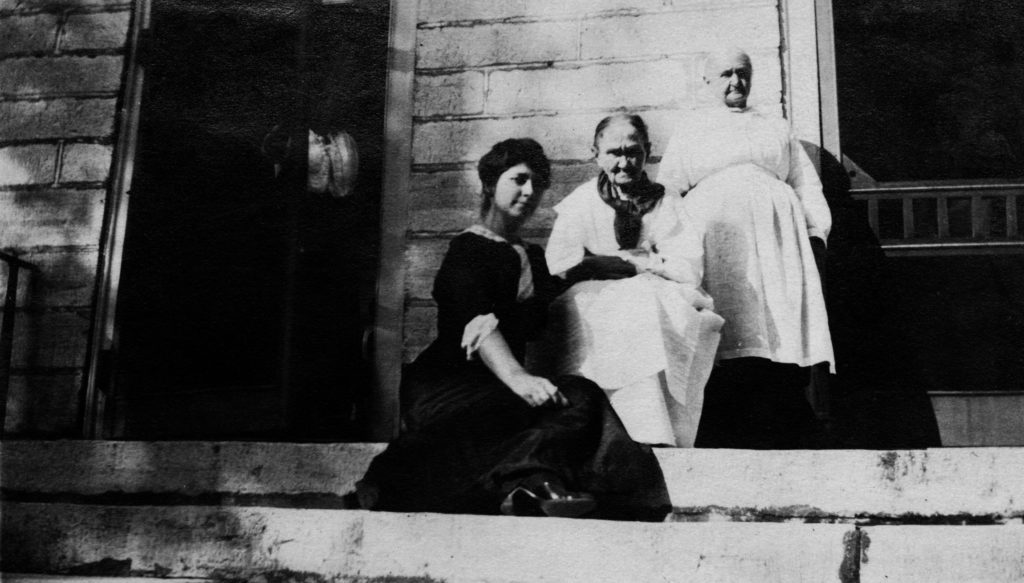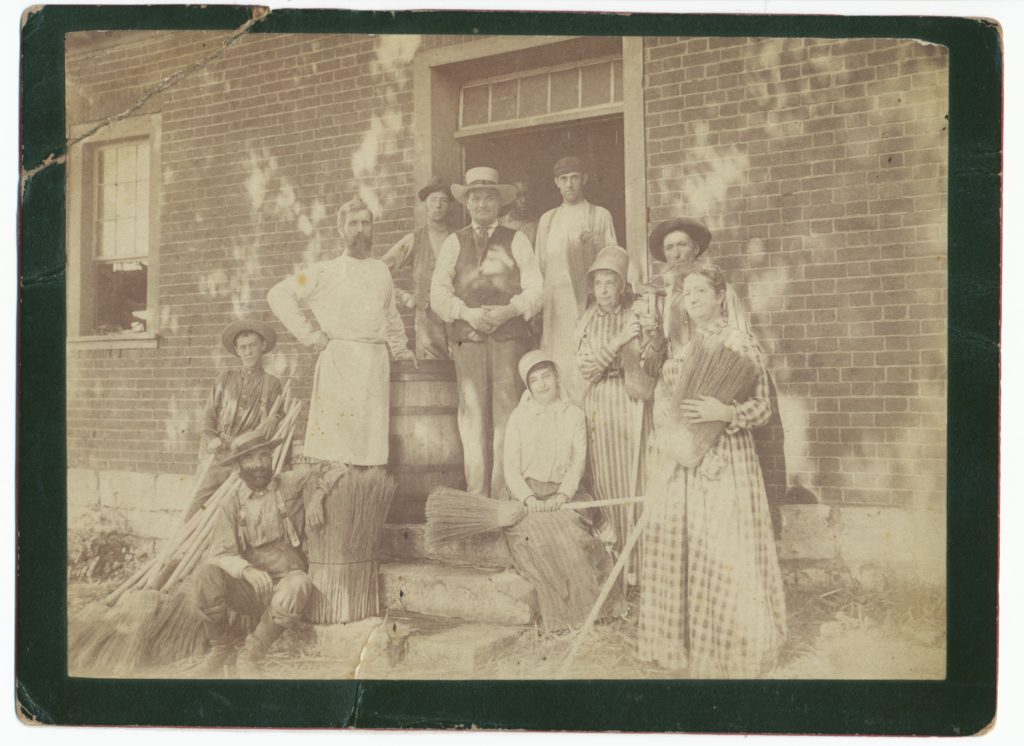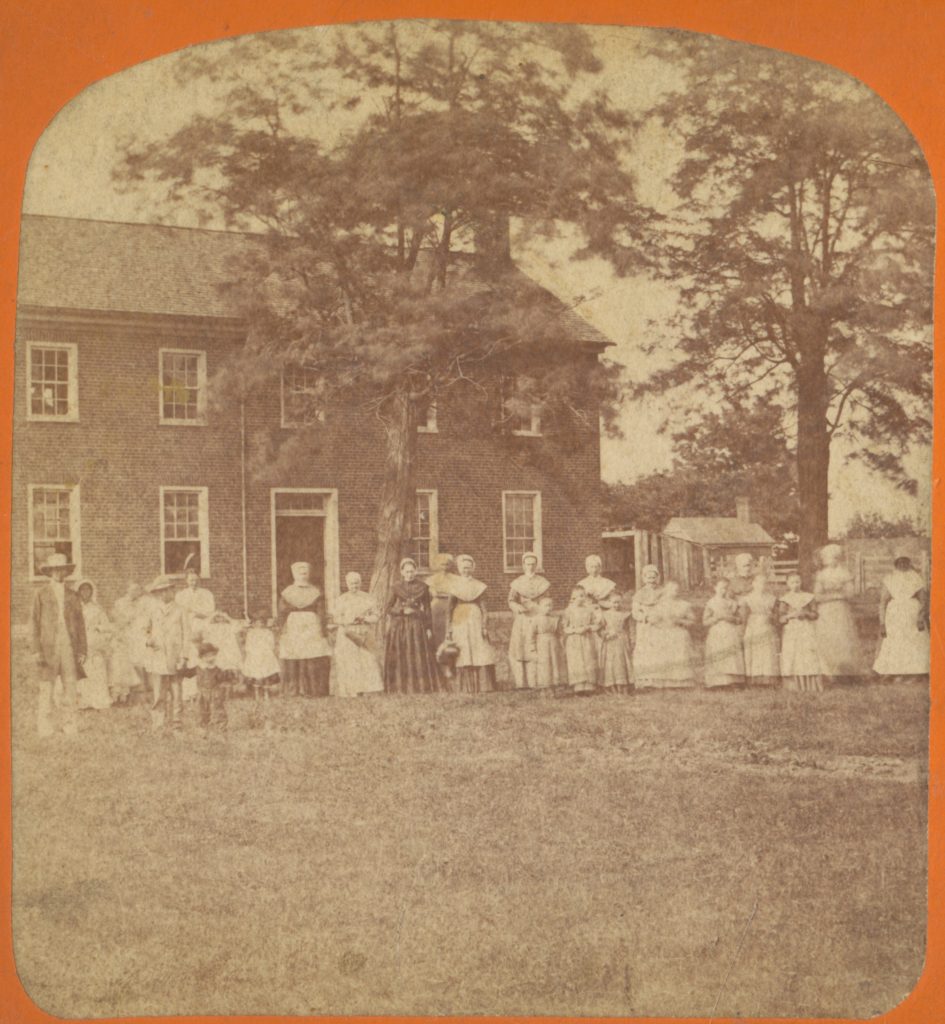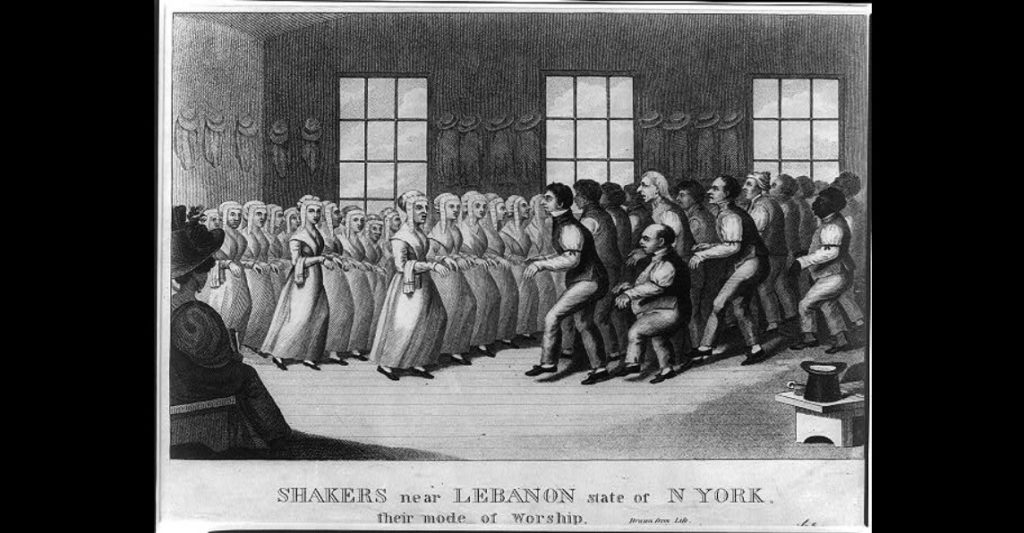Brandon Wilson, Program Specialist
Over the course of its history, the Shaker community at Pleasant Hill was the spiritual home to 28 people who identified as African American. But the story proves more complex, exciting and sometimes tragic than what that simple number, 28, can represent. Pleasant Hill’s location on a major thoroughfare, within the boundaries of a slave state, meant that hundreds more African American people were enmeshed into the Shakers’ rich history in Mercer County, Kentucky. Take a close look at some of Shaker Village’s archival images, and see just how complex the Village’s racial history really was.

A great place to start is the photograph below, of a group of Pleasant Hill Shakers in the doorway of the Broom Shop circa 1886-1891. The African American man stands in the rear of the group, in the shadow of the doorway, with his head tilted downward. Then there is the image of the Children’s Order, with an African American Shaker woman standing off to the far-right side, markedly distanced from the others.


In many of our nineteenth century images, African Americans can be found at the margins and outer edges. This trend changes over time, until the twentieth century when African Americans begin to occupy center stage in many archival documents. If visual evidence can offer any clues about life as a black Shaker, it is that the Shaker approach to race was full of both hope and hypocrisy; while the Village was a rare example of inclusivity, a certain level of prejudice percolated the community, leaving African Americans sometimes standing in the shadows and edges of social life.

We may use this history as an opportunity to look closer at our own lives. Whether it is in our office spaces, shopping spaces, or at community gatherings, who do you see standing in the margins? Who might you notice is present, but not fully included? What does this say about our own communities, and what can we do to change for the better?
To learn more visit Shaker Village and attend one of our daily educational tours featuring our seasonal program African American Experiences at Pleasant Hill Fridays and Saturdays through February 29th.